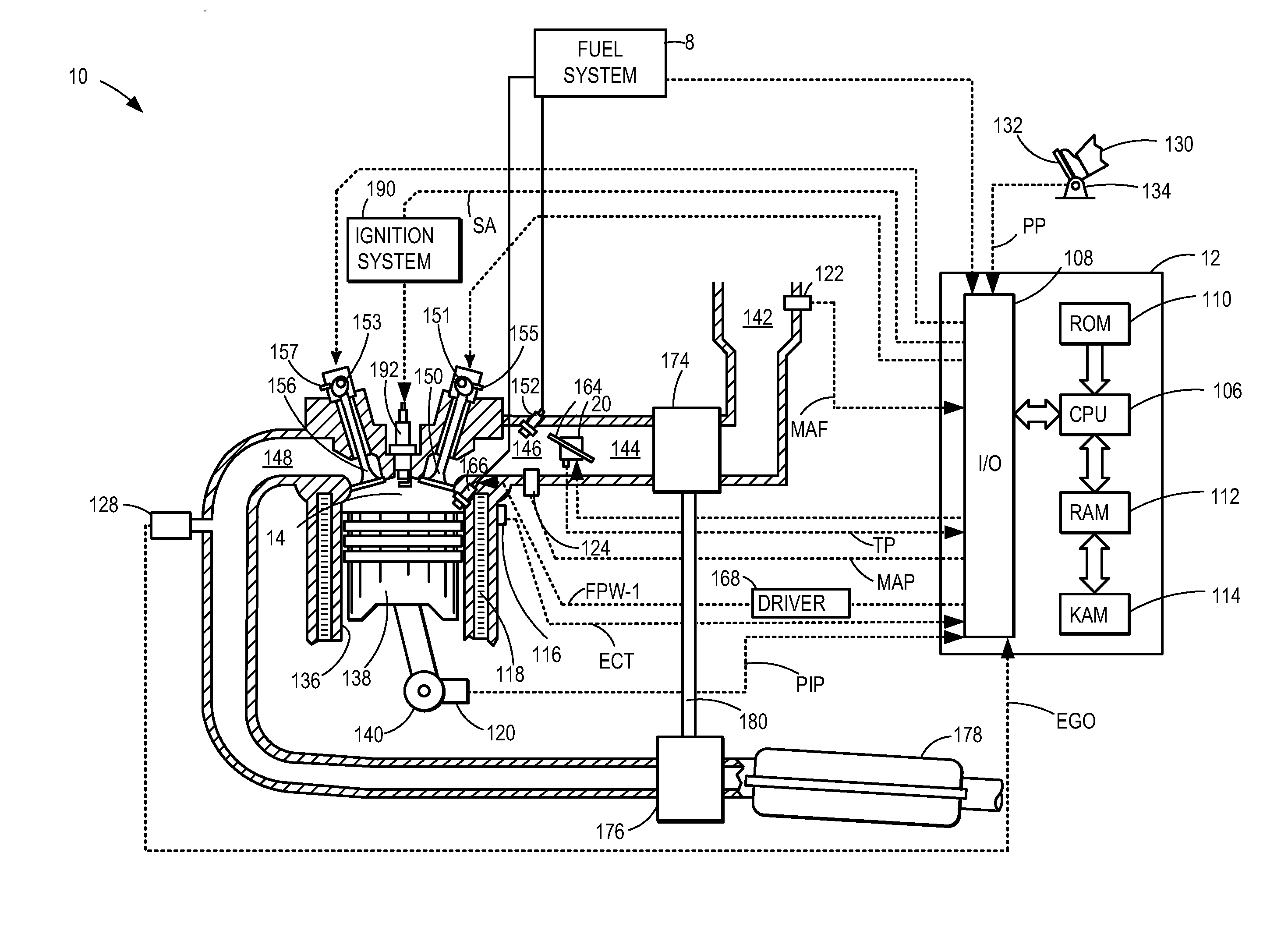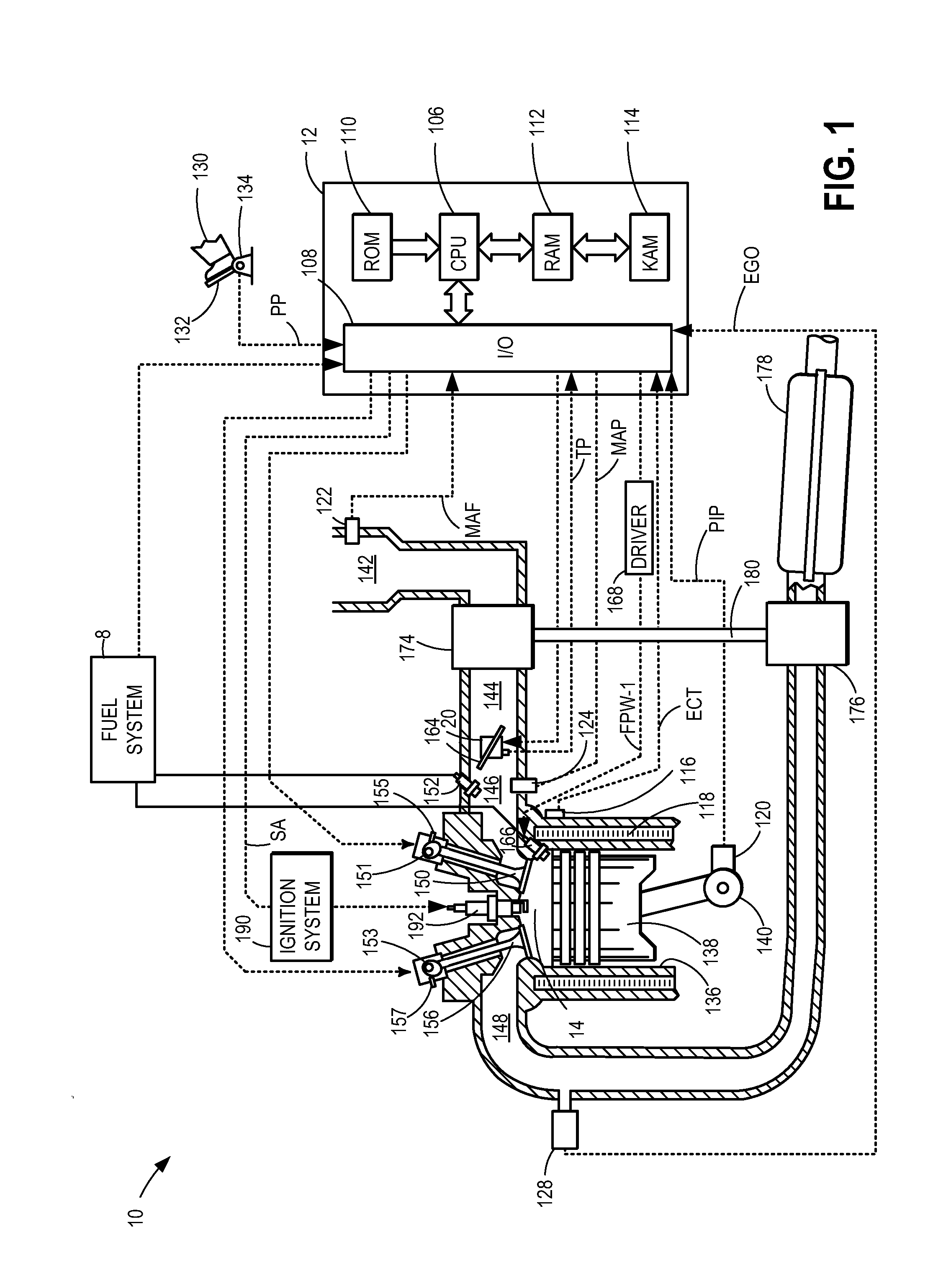Internal combustion engine which can be operated with liquid and with gaseous fuel and a method for operating an internal combustion engine of this kind
a technology of internal combustion engine and gaseous fuel, which is applied in the direction of combustion engine, machine/engine, output power, etc., can solve the problems of high pumping loss, relatively little time available for fuel injection, and particularly disadvantageous load control methods, so as to achieve greater efficiency, lower compression ratio, and higher compression ratio
- Summary
- Abstract
- Description
- Claims
- Application Information
AI Technical Summary
Benefits of technology
Problems solved by technology
Method used
Image
Examples
Embodiment Construction
[0027]The disclosure is described in greater detailed below in reference to the drawings. An example cylinder in accordance with the present disclosure is shown in FIG. 1 with an overview of the separate fuel tanks and injection systems shown in FIG. 2. FIG. 3 details a method by which an operating mode for the engine described in FIGS. 1 and 2 may be selected. FIG. 4 shows a method of operating an engine in a first and second operating mode once a mode has been determined.
[0028]FIG. 1 depicts an example embodiment of a combustion chamber or cylinder of internal combustion engine 10. Engine 10 may receive control parameters from a control system including controller 12 and input from a vehicle operator 130 via an input device 132. In this example, input device 132 includes an accelerator pedal and a pedal position sensor 134 for generating a proportional pedal position signal PP. Cylinder (herein also “combustion chamber’) 14 of engine 10 may include combustion chamber walls 136 wit...
PUM
 Login to View More
Login to View More Abstract
Description
Claims
Application Information
 Login to View More
Login to View More - R&D
- Intellectual Property
- Life Sciences
- Materials
- Tech Scout
- Unparalleled Data Quality
- Higher Quality Content
- 60% Fewer Hallucinations
Browse by: Latest US Patents, China's latest patents, Technical Efficacy Thesaurus, Application Domain, Technology Topic, Popular Technical Reports.
© 2025 PatSnap. All rights reserved.Legal|Privacy policy|Modern Slavery Act Transparency Statement|Sitemap|About US| Contact US: help@patsnap.com



